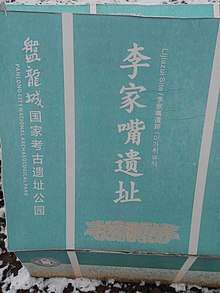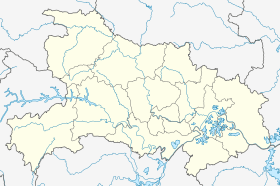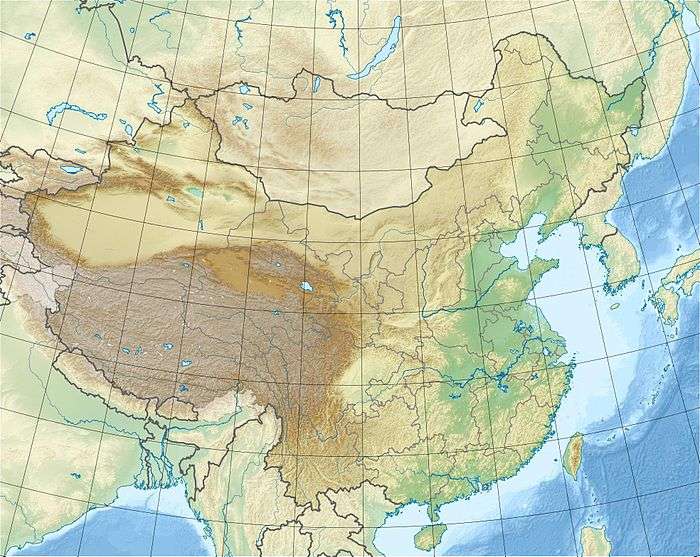Panlongcheng
Panlongcheng (simplified Chinese: 盘龙城; traditional Chinese: 盤龍城; pinyin: Pánlóngchéng) or Panlong City is an archaeological site associated with the Erligang culture. The site is located just north of the Yangtze river in Huangpi, Wuhan, Hubei, China. Panlongcheng is the largest excavated Erligang site (1 km² at its peak), showing the southernmost reach of the Erligang culture at its peak. It was discovered in 1954, and excavated in 1974 and 1976.
盘龙城 | |
 | |
 Shown within Hubei  Panlongcheng (China) | |
| Location | China |
|---|---|
| Region | Hubei |
| Coordinates | 30.6966°N 114.2600°E |
| History | |
| Cultures | Erligang |
The site at Panlongcheng was sparsely inhabited during the Erlitou period, consisting mainly of several small settlements and occupying an area of around 200,000 m². During the early Erligang period, the site suddenly grew rapidly, reaching an area of around 1 km2 (0.39 sq mi) with a walled center of 75,000 m². Panlongcheng may have been an Erligang outpost used to control regional resources, such as copper mines.
The construction and bronze casting techniques at Panlongcheng are identical with the techniques employed at Erligang and Zhengzhou; however, the pottery style is different. The style of Erligang elite burials is almost an exact replica of the burials at Zhengzhou; however, later layers show that the Erligang style disappeared during the later stages of the Erligang culture. The site declined until it was abandoned altogether at the end of the Erligang culture. Panlongcheng's decline may have been affected in part by the growth of the site at Wucheng.
In Hubei Province, other sites such as Jingnansi and Baimiaozhu also feature Erlitou or Late Erlitou–Early Erligang type of ceramics.[1]
Notes
- Roderick Campbell (2014), Archaeology of the Chinese Bronze Age: From Erlitou to Anyang. Cotsen Institute of Archaeology ISBN 978-1-931745-98-7
References
- The Cambridge History of Ancient China : From the Origins of Civilization to 221 BC, Edited by Michael Loewe and Edward L. Shaughnessy. ISBN 0-521-47030-7
- Liu, Li and Xingcan Chen, State Formation in Early China, ISBN 0-7156-3224-8